The Best Manga and Light Novels of 2023
by The ANN Editorial Team,
For the first time, we're adding the best manga and best light novels to our year-end wrap-ups! We've split both publishing mediums into two categories: new and continuing. The new section highlights our favorite series published in English for the first time this year, while the continuing section is for series that premiered earlier but are still actively published or ended this year.
You'll notice for this year that Rebecca Silverman is filling in our light novel sections. We hope to expand the section next year with more entries from our critics' panel.
The Best New Manga of 2023
Richard Eisenbeis
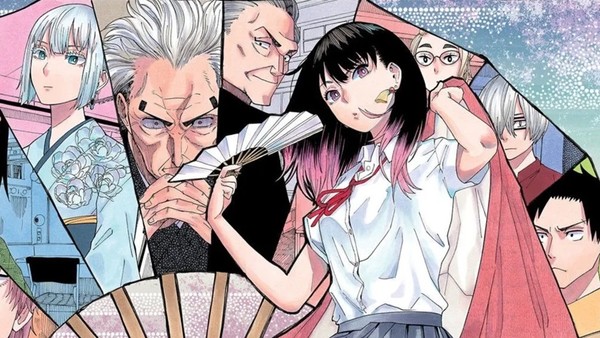
Shinta is a man who lived and breathed Rakugo—the traditional art of Japanese storytelling. Yet when he was on the precipice of becoming recognized as a storytelling master, he was expelled by one of the masters of his school—bringing a sudden end to both his dreams and career. Now, a decade later, his daughter Akane has finally come of age, and she's out for revenge against the man who broke her father's soul—and she'll get it by taking the world of Rakugo by storm using her father's storytelling style.
It's hard to say how awesome of a manga Akane-banashi is. On the one hand, it teaches you about the world of rakugo—the types of stories, the culture surrounding it, and the behind-the-scenes politics. On the other hand, it is the personal story of a relatively normal girl who sets out to prove that those who looked down on her father were wrong. While she is talented and has an amazing command of the fundamentals, she is stepping into a world she knows little about—but has the tenacity to survive and overcome all that's in her way. Or, to put it another way, there's a reason that Eiichiro Oda and Hideaki Anno have publicly stated their love of this manga: It's fantastic.
Nicholas Dupree
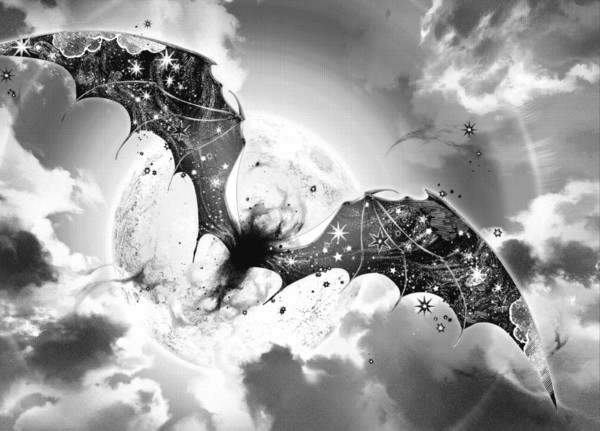
While vampires have never gone out of style, 2023 had an odd number of high-profile Dracula-related adaptations and derivative works and even a renewed surge in readership for the infamous Count through the "Dracula Daily" movement online. So it was great timing to bring over this heady, shocking, and trippy re-imagining of Bram Stoker's seminal horror story.
#DRCL is weird. While far from a faithful adaptation, it hues closely to the kind of terror its source material sought to engender when it was first released. It just does so by turning the entire story into a wild, uncanny fever dream that only becomes more disconcerting when it starts to resemble the original fully. These new versions of the classic characters are wild, strange, and fascinating in their new psychologies and circumstances. The series' version of Lucy is too striking to spoil, but trust me when I say it turns the whole premise of her trio of suitors on its head. Its version of the horrors that occurred upon the Demeter is so unendingly strange and surreal that I don't know how to explain it. There are numerous moments where I'm not even sure what's going on, but the sheer rush of it all kept me turning the pages.
All of it is rendered with Shin'ichi Sakamoto's gorgeous and haunting art style, piecing together so many captivating images in sequence that it feels pointless to try and describe it with words. No amount of text will convey how it feels to read the first volume's spreads back-to-back or experience the shudder-inducing page-turns that occur throughout. Even as relatively little plot occurs on these pages, the atmosphere of it all is too engrossing to care. Horror is as much about what the audience feels as what happens in the story, and the god damn vibes of this manga are immaculate. Any horror fan should read this, regardless of how familiar with the original novel you are – you won't be disappointed.
Rebecca Silverman
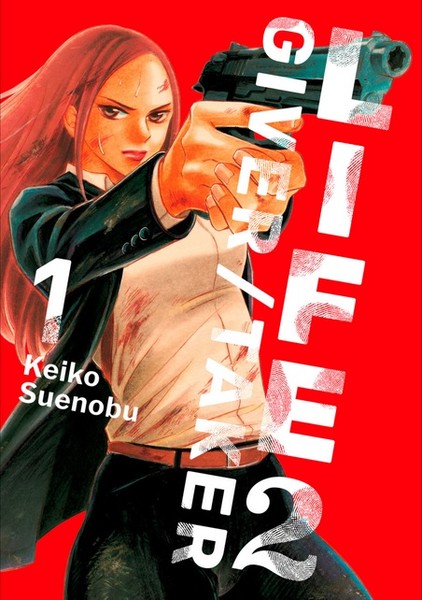
There are a lot of good manga series that came out in 2023, but I decided to go with one that both began and ended because I like the symmetry. Keiko Suenobu's Life 2: Giver/Taker is a tightly put-together suspense story, focusing on her usual themes of gendered violence and mental health. Unlike the original Life or Limit, this series doesn't star high school students – or at least, they aren't the focus. Itsuki was in high school when her beloved little sister was murdered by the angelic-looking boy next door, Ruoto, and she grew up to become a police detective. She's determined never to let the same senseless tragedy repeat itself. When she realizes that Ruoto is about to get out of the juvenile incarceration facility he was in, she begins to fear that he's just going to use his beauty to conceal his sociopathic nature – again. Without giving too much away, she's right to worry, and the series is a game of cat and mouse between them. As it goes on, we come to understand more about Ruoto's mental state and the reason why he's playing this "game" with Itsuki, who is fighting against rampant sexism in the police force as she tries desperately to stop him. At six volumes long, it doesn't overstay its welcome while still having enough time to truly develop its story and characters, and the ending is satisfying while still being haunting. It's the sort of series you could read in one sitting but will think about for weeks afterward.
Christopher Farris
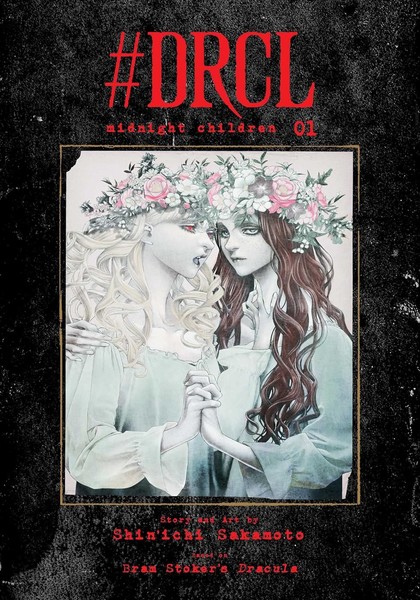
To my great shame, I was somehow unfamiliar with Shin'ichi Sakamoto before this year. But then the debut volume of #DRCL midnight children landed on my review desk, alongside Sakamoto's previous series, Innocent. That was all it took to go full, "Where has this guy been all my life?" It's not necessarily my fault. Sakamoto's oeuvre would seem to have been underrepresented in English publishing, with the debut of #DRCL apparently being the kickstart his content needed over here. It's Dracula, after all, so you know everyone's down for the Count. That Sakamoto can take such a well-worn tale, one which people happily consume daily even, and spin it into his personalized vision of bizarre beauty is a testament to his status as a master craftsman. This book opens with the best take on the last voyage of the Demeter you'll witness all year, that's for sure. #DRCL marks commentary on the encroachment of modernity in society while modernizing many of the Dracula plot and cast elements. It turns this known quantity of bloodsucking bad times into a fresh, fundamentally strong, scary horror story. I don't throw words like "genius" or "masterclass" around lightly, but being turned onto my man Sakamoto's skills this year has me considering slotting him into those columns. We can't get the next volume of #DRCL over here soon enough.
Caitlin Moore
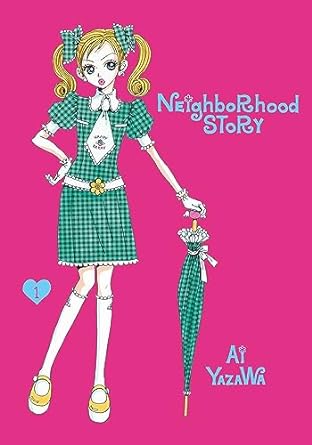
It feels a little funny to put Neighborhood Story under "Best New Manga," considering it's probably older than a good number of the people reading this. However, it totally counts because it got its first-ever English release just a few weeks ago. This earlier series by Ai Yazawa, best known on this side of the Pacific for Paradise Kiss and NANA, is a softer, fluffier high school romantic comedy than the complex, mature works that defined her later career. It features Mikako Kouda (who you may know as Miwako's older sister), a fashion student who realizes that her feelings for her childhood friend and neighbor Tsutomu Yamaguchi have started to shift. Despite its simple premise, Neighborhood Story is shōjo manga at its best: a first love story between two likable kids surrounded by friends, all of them growing and changing.
Yazawa's gift for writing and drawing human characters truly shines in such a mundane space. These teens really act like teens, with all the joy, energy, and passion that come with age, right along with the penchant for rapidly shifting moods, irrational self-centeredness, and a growing interest in romance and sex. The noodle-limbed, jug-eared character designs look a bit cartoonish at first, but their expressions are so deftly realized that they carry through the emotion of every exchange. With her stubborn pragmatism and inability to be honest about her feelings, Mikako is a classic type of heroine, but the dialogue has so much wit and warmth that she never feels cliche. You may see some people out there on the internet trying to convince you that Neighborhood Story is "not like other shōjo," but that's bull hockey. It's the platonic ideal of school romance shōjo, brought to life by a skilled author, and I'm so happy it's finally available.
MrAJCosplay
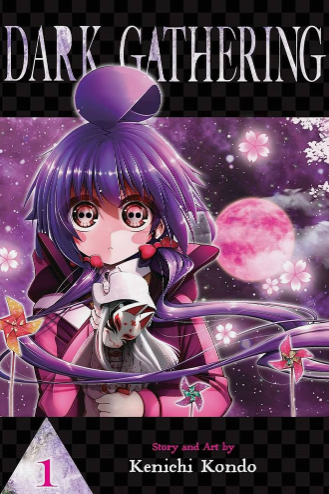
Dart Gathering is a series that I wasn't expecting to like as much as I did because of how gimmicky it felt at the beginning. We have a creepy child with unexplained skulls in her eyes acting very weird around a scaredy-cat main character who wants nothing to do with dark supernatural spirits even though he keeps attracting them. Hijinks ensue, and everybody laughs at the random fourth wall that breaks in between chapters. However, by the end of volume one, I was shocked at how disturbed and caught off guard I was by the explored subject matter. Yes, Dark Gathering is very edgy and over-the-top, but it revels in that material in the right way. It feels like one of those scary roller coasters at Disneyland. The imagery is striking, and the thrills are exciting, but I know I will come out on the other end of this OK. Sometimes, you need a volume like that, something that'll just give you a good shake from time to time without going straight up into Junji Ito-level territories of upsetting and disturbing.
Don't get me wrong; the artwork is incredibly striking to the point where if Kenichi Kondō wanted to, he could get away with making a more thoughtful horror story. However, a good balance is struck between the horrific imagery and the shōnen underdog story. Plus, I was surprised at how much the ending genuinely gripped me in an equally unsettling, funny, and exciting way. I want to see more of this world of spirits and how our main cast approaches them creatively. A lot of manga this year intrigued me, but this was the first one that got me both intrigued and excited.
The Best Ongoing Manga of 2023
Richard Eisenbeis
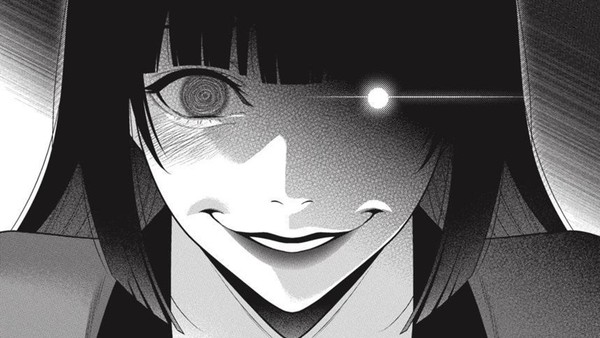
This year, with the release of Volume 16, Kakegurui finally reached the end of the school election arc, where the heirs of the various "Bami" group families attempted to wrest control away from Kirari by taking her place as school president. And while there is plenty of exciting gambling action as Mary, Ririka, and Kiari face each other in the highest stakes game of the election, that's not what makes this the best-continuing manga of the year.
Instead, the arc's climax makes it stand out, which asks one crucial question: What happens if you deny Yumeko her heart's desire? How will she react when everyone around her is gambling, and she is shut out? Will she simply take it? Will she find a way back in? Or will she instead choose violence and watch the world burn?
Rebecca Silverman
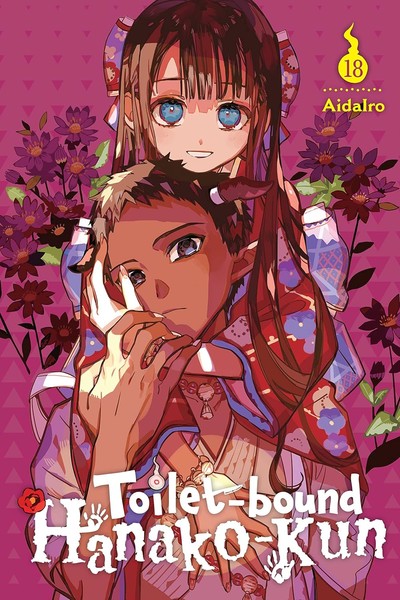
With a second season upcoming, it's worth reminding everyone that the original manga of Toilet-Bound Hanako-kun is still going (eighteen volumes in English as of this writing) and is fantastic. The story in the post-anime volumes gets even darker than what we've already seen adapted. It starts to explore the folkloric history of the town it takes place in and how the characters' feelings influence their actions – something we already know a little about with the way Hanako-kun changed his destiny. It never forgets that ghost stories should be sad in places, and when it needs to lean into that, it does so with skill. There are still lighter moments, and those don't take away from the more serious elements of the series, which says something about AidaIro's skill. The art's thick lines and detail-laden backgrounds make it visually striking, like the whole thing is drawn in stained glass with the color leached out of it. By turns sweet, creepy, and bizarre, this isn't a series I see myself dropping anytime soon, and while there are others, I can say the same thing about (Skip Beat!, Even Though We're Adults, Villains are Destined to Die…) this is the one that I catch myself thinking about at random times.
James Beckett
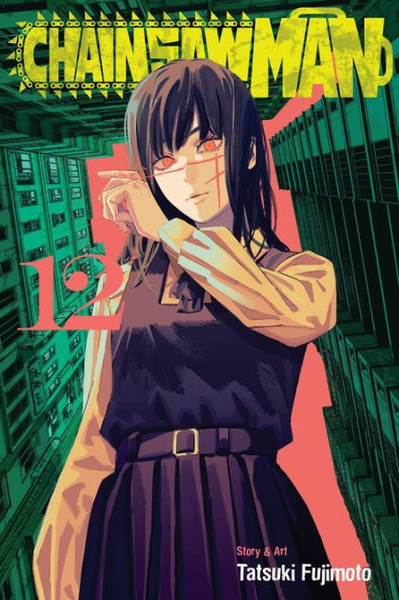
Some might argue that Chainsaw Man has suffered from something of a decline in Part 2 of its run. They might claim that it is disappointing and disingenuous to shift to a brand new perspective character, Asa Mitaka, since it means that the book's title character gets significantly less "screen time" in the story. They might argue that the story's eccentric and erratic pacing has detracted from the action and spectacle that fans celebrated so much in its first 100 or so chapters. They might even go so far as to say that Chainsaw Man has lost sight of everything that made it such a smash hit in the first place.
These people are, of course, cowards with terrible taste. They will certainly pay for their Crimes Against the Great Chainsaw when the day of reckoning is at hand (just like all of those goofs who harassed the crew at MAPPA for having the gall to make their adaptation of Chainsaw Man into one of the most beautiful TV anime productions of all-time). Thankfully, I am here to correct any misconceptions folks might have about the state of Chainsaw Man in 2023 with a simple but absolute decree: Chainsaw Man Part 2 is good, y'all. It is, in fact, really good. Asa Mitaka is one of the most agonizingly relatable and well-written protagonists that I've ever seen in a Shonen Jump title, and the fact that she can transform into the badass War Devil and make swords out of human spinal columns is just icing on the cake.
I don't think that our boy Denji has been done dirty, either. Despite the relative lack of Chainsaw Man in the manga that is titled Chainsaw Man, the amount of depth and interesting conflict that Denji has been given in his ongoing quest to preserve his life while still fighting for his dreams is top-tier storytelling, make no bones about it. There is one recent development that walloped me in the gut so hard that I literally had to pick up the phone and call my wife so I could tell her, "Tatsuki Fujimoto is a monster and a war criminal, and I will never forgive him for what he's done." Yes, this is a compliment. Only the most excellent of manga possess enough power to earn a spot on both my Best of the Year and my Enemies for Life lists. Congratulations, Mr. Fujimoto, you sick bastard.
Christopher Farris
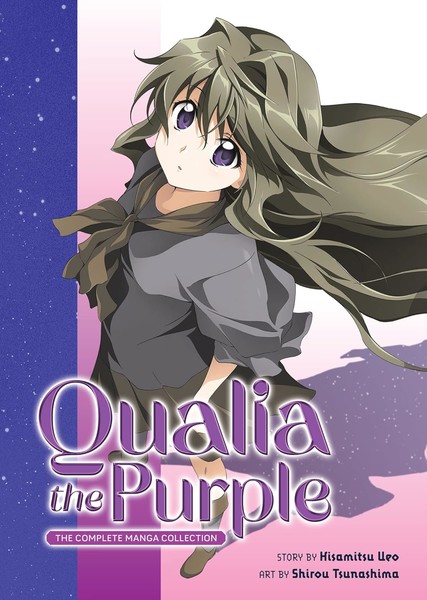
Forget finally getting Gunbuster on Blu-ray or the airing of the best BanG Dream! anime ever—the real reason 2023 was the best year for me was that Qualia the Purple received an official, English print release. Both the original novel and the manga! The manga version of Qualia originally came out way back in 2011, and scans then made the rounds as one of the most electric escalating sci-fi yuri romances ever conceived. It was also pretty damn formative for the kinds of storytelling stylings I'd realize were 200% my jam. It'd be ruining the fun to tell you much about what happens in Qualia the Purple beyond its initiating concept: Marii Yukari is a girl who sees everyone in the world as robots. From there, the story jumps off into explorations of theoretical physics and thought experiments that weren't out of place in light novels in the 2010s or today (shout-out to Schrödinger's cat!). Qualia the Purple then continues punctuating itself with perfectly paced gut punches. It's a plot that transforms, like an adaptable robot, into something I'm still turning over in my head over a decade later. Seven Seas' omnibus release, at last, allows us in the English-speaking world to see Shirou Tsunashima's sharp art complimenting Hisamitsu Ueo's story in official, physical form. It's something I would have waited several lifetimes to see happen.
Steve Jones
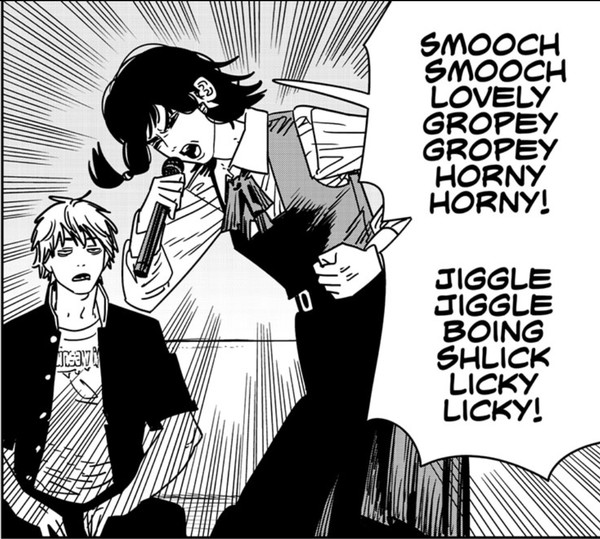
This is definitely a "me" problem, but I find it challenging to keep up with ongoing manga. My focus comes and goes in fits and spurts, and that doesn't happen on a consistent weekly or monthly basis. I'd usually rather wait for a series to conclude and read it front-to-back like a novel. I mention this only so you can appreciate how unusual it is for me to hop on every new chapter of Chainsaw Man the day that it drops. There's something in the irreverent alchemy of Fujimoto's freewheeling plotting that makes it appointment reading for me. I can never anticipate the next development, nor do I want to. I love not knowing when a chapter will be 14 pages of Asa being a loser, or earnestly explore how Denji's dreams and ennui have evolved since Part 1 ended. Plenty of other facets merit praise: the romcom shenanigans, the awesome devil/fiend character designs, Fumiko's karaoke session, etc. What's most striking to me, however, is that five whole years after its debut, Chainsaw Man still feels like it's getting away with murder, and we're just fortunate enough to be eyewitnesses.
MrAJCosplay
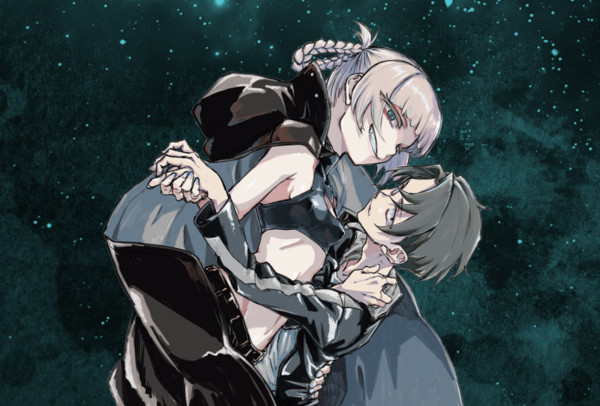
Sometimes, when I'm bored and have finished catching up on my work, I scroll through the Shonen Jump or Viz Media manga apps and pick a random series to read or catch up on. I recall Call of the Night being reasonably popular when the anime came out a while back, and the character designs seemed very familiar to me as they were from the same person who wrote Dagashi Kashi, which I thought was pretty funny in a sort of mindless way. I was expecting a similar sense of mindlessness here, but what I ended up getting was a surprisingly layered and dark supernatural adolescence story that dealt with themes of abandonment, neglect, suicide, and what it truly means to fall in love with somebody.
At the time of this writing, the series only has a few chapters left before finishing, and it's a strong contender to be one of my favorite manga of all time, assuming that the ending doesn't royally drop the ball. After catching up with the series towards the end of its final arc, this overwhelming sense of loss hangs in the air. Yes, it can get goofy and dumb, but when you look at our protagonists, Ko and Nazuna, you realize that's what they are: dumb teenagers trying to figure out how the world works, whether it's the world of a human or a vampire. Sometimes, there is overlap, and the story takes the time to explore the sad tragedy that comes with growing up in their respective worlds. Call of the Night shows that something as undefinable as falling in love can come with a consequence of leaving people behind or carrying with it far more tragedy than you might've initially thought. At the very least, it might be enough to make you regret having those thoughts and feelings in the first place.
That's how the series excels on a metaphorical level, but on a straightforward one, it is a very enthralling and entertaining action series. The fight scenes are kinetic, the characters are incredibly likable, and the way Kotoyama draws Japan at night is breathtaking. As someone who likes to go out and walk around his neighborhood at night to sort of take a break from everything, this manga perfectly encapsulates that feeling. It's like being in your own little world, detached from everything, and while that can be liberating, sometimes it can also be pretty lonely. Both of those feelings simultaneously make Call of the Night feel so beautiful.
The Best New Light Novels of 2023
Rebecca Silverman
BL light novels are still few and far between in English translation (although WordExcerpt, which translates Korean novels, has a number), and when they're as interesting as You Can Have My Back, that stands out as unfortunate. Throwing its hat into the reincarnation ring, this series explores the light novel standby in more depth than a lot of stories. Eighteen years ago, Ionia died in battle, devastating the men who loved him, and the day after his loss, Leorino was born in a nearby manor. Leorino is undeniably the heir to Ionia's memories, but does that make him Ionia? A lot of people, including the deceased's true love and lover, desperately want that to be the case, but Leorino himself isn't sure of the answer. Part of him thinks he can't be because his physical body is no longer as strong as Ionia's. Still, he's also genuinely conflicted about what it means if he's more "Ionia" than "Leorino." Throughout the two tomes YenOn released this year, we see Gravis (Ionia's true love) come to love Leorino for himself and not just the Ionia he sees inside of him, but the issue is far from resolved, especially for Leorino. Part romance, part exploration of grief, this is a series I wasn't sure I would like and ended up very invested in. It doesn't hurt that it sometimes feels like MXTX's danmei novels, but it's a good series in its own right – especially if you like your books long.
Few BL novels in English, and I'm somehow putting two on this list? I suppose that means the books we are getting tend to be good. The two Sasaki and Miyano novels released this year are both books that aim to fill in the gaps the manga left, and not only do they do a lovely job of that, but they also are written impressively closely to Shō Harusono's tone in the manga – as in, if you didn't know Harusono didn't write the prose, you wouldn't be able to tell. That should make them more appealing to manga readers all on its own, but to make it even better, the short story format allows for side characters to develop more than they do in the main story. People who come across as one-note gag characters become actual people here, and that expands the series' world dramatically as we realize that everyone sees themselves as the protagonist; we only fixate on Sasaki, Miyano, Hirano, and Kagiura because that's our focus is directed towards. It's a neat way to spin things out and makes for a very organic reading experience, whether you come to the books from the manga or the anime. If you love the franchise's world, these make it even better.
Inner court fantasies are becoming more prevalent in English translation, and Raven of the Inner Palace stands above them all. More mystically focused than its sister series, the story explores not only its court intrigue, but also the gendered power structures that made the court what it is in the plot's present day, as well as how folklore has influenced and shaped those dynamics. Jusetsu (or Shouxue in the anime) is the current Raven Consort, a false bride to the emperor whose actual duty is to maintain the peace and balance of the court, supernaturally speaking. She's the vessel for Uren Niang-Niang, a goddess who has been forced into submission, and the entire system is designed not only to suppress the goddess, but also to undermine the fact that what is now called the raven consort was once actually the Winter King, a female co-ruler with the Summer King, who now bears the title of emperor. Jusetsu is young, and this perhaps keeps her from sticking to the plan Raven Consorts have followed for generations, one of isolation that, if you think about it, says more about trying to keep the Winter King tucked away where she can't make any ruling. As she becomes increasingly involved with other court members, including the emperor himself, who is both horrified at how Jusetsu is supposed to live and very attracted to her, old myths begin to stir to life. One of the major strengths of this series is how it creates and uses its folklore to drive the story, and it rarely forgets to acknowledge the little tragedies along the way. It's a well-thought-out series and very much worth picking up.
This series' appearance in English, thanks to J-Novel Club, proves that sometimes good things do come to those who wait. Decades after its initial publication and the release of its anime adaptation, Mizue Tani's Victorian fantasy hearkens back to a very different era of light novels, one where the internet played less of a role. That makes these books read much more like "regular" novels – there's little-to-no bloat in the writing, and the language is more complex. Part of that last point is because either Tani or English translator Alexandra Owen-Burns (or both) is much more invested in making language hew closer to Victorian linguistic norms, something which greatly enhances the reading experience. Tani has clearly done her research, and if it isn't on the level of Kaoru Mori's Emma, it's still a lot better than many Victorian-set novels I've read. Also impressive is the way that Tani uses British folklore; many of the fey creatures mentioned are drawn from it, as are many of the customs Lydia describes. With all of this, it almost feels too much to ask that the characters are also fantastic – yet, they are! Lydia is very much in line with first-wave feminism rather than artificially or anachronistically spunky, and Edgar is just the right amount of caring and too interested. It's an excellent historical fantasy, and I highly recommend picking it up.
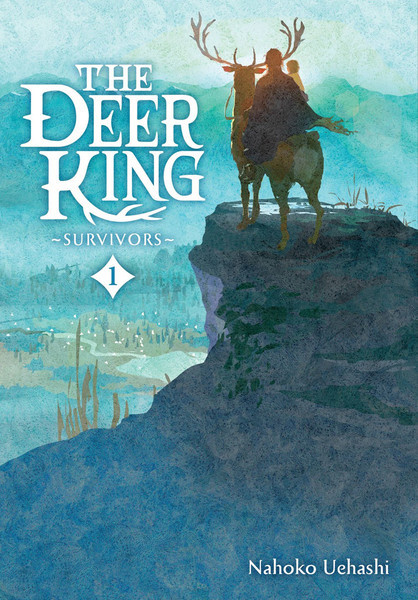
Is it fair to use The Deer King as my choice here? Maybe not. It's not technically a light novel; it's a full-on fantasy novel in the literary fiction vein that just happened to be published under the YenOn imprint. But it's so good that I couldn't resist. The story takes place in what seems to be a fantasy version of Central Asia, and it deals with the cultural clashes as wars change borders and indigenous cultures come under threat when they refuse to assimilate. But it also uses vaccine theory and the spread of disease and immunity as a plot point, tracking how a mysterious disease affects some people while others are immune for reasons no one entirely understands. Finding those answers is part of the main plot, but the way that it's wrapped up in explorations of fantasy cultures and a blend of real-world and fantasy-world trappings is fascinating. It's hard to say too much without giving things away, but if you're a fantasy reader and enjoyed titles like Guin Saga or Moribito, don't let this one pass under your radar. (And read the novel – the manga cuts out much of what makes the story special.)
The Best Continuing Light Novels of 2023
Rebecca Silverman
Given the sheer quantity of isekai and villainess stories, it would be remiss not to include at least one. Yū Sakurai's series, published in English by Cross Infinite World, is both: it follows a young woman who is reborn into a villainess role, as they so often are. Laeticia is, of course, not bad, but to get away from the machinations of her former fiancé, she accepts an offer to become the temporary queen of a neighboring nation, which has a very complicated queen-selecting process and desperately needs a placeholder. That's just fine with Laeticia, because not only does she now have the space to do her own thing (which involves a lot of baking), but she's also free to fill her home and life with as many animals as possible…which may or may not include her royal husband's fluffy wolf form. There's not a whole lot to this story, although it has sufficient romance and political intrigue to keep the plot moving. However, it's consistently one of the coziest reads on my list. It also has a lot of fun little details, such as King Glenreed constantly worrying about this "Jiro" fellow Laeticia keeps mentioning, totally unaware that Jiro was her dog in her past life. It's a really comfortable series that manages to maintain its feel without wandering off course, and given the unpredictability of the series in general, I think one that can stick to its plan is worth celebrating.
The only reason this series isn't higher on the list is because volume four is nowhere near as good as the first three. That's probably because the first three books form a tight narrative on their own – solving the circumstances that led to the execution of Scarlet Castiel, who is currently haunting Constance Grail. Constance was accidentally present at Scarlet's execution ten years before the story's start, and that may be why she can see Scarlet's ghost. She soon finds herself caught up in intrigues that began a decade ago, and if she isn't always up to the task of investigating herself, she's got plenty of allies. The story makes excellent use of 18th-19th-century European social structure, and the deeper you get into the truth, the more it starts to look like a very familiar story about the devaluation of the individual in the schemes of the power-hungry – especially if that individual is young and female. It's both tragic and triumphant, and if volume four didn't need to exist, it still does continue to tie up some of the loose ends from books 1-3. This should be on your reading list if you like historical fiction with a soupçon of fantasy and a dollop of mystery and political intrigue.
Are you all caught up in the (currently airing) anime? Why not take this opportunity to read the source material? Trust me, it's just as good as the show, if not better, and it's also a little easier to follow some of the convoluted court politics on the page. But even without that last bit, Natsu Hyūga's pseudo-Chinese tale is always a good way to spend a few hours. Maomao's (somewhat reluctant) adventures at the imperial court encompass a lot of genre territory, although "political intrigue" is probably the dominant one by volume nine. She begins her journey being kidnapped and sold to the inner palace as a servant before moving into the outer court and eventually into a position even better suited for her particular talents, and her clear-eyed view of humanity and its foibles ensures that she's never lacking things to do. Alongside this, her relationship with Jinshi, the preternaturally beautiful man in charge of the inner palace, develops in some interesting ways, albeit ways that don't always paint Jinshi in the best light. There's a sense that he's much more trapped than she is, despite his status and gender, and the theme of women being prisoners in gilded cages expands to incorporate other groups of people as the books go on. The series can get very dark – around the third and fourth volumes, the danger rachets up considerably, and Hyuuga is equally competent at writing that as the earlier content. Through it all, Maomao remains a stand-out heroine who never backs down and is always true to herself, no matter who she interacts with. She alone is worth the admission price; the plots are good and the books well-written is really the icing on the cake.
This is, hands down, the most addictive thing I've read this year. The rare Korean novel to make it into English translation, Under the Oak Tree is a historical fantasy (melo)drama that follows Maxi and Riftan as they repeatedly don't have the one conversation that they really, really need to. It's more than that, obviously, but it's also true that these two loveable morons are always just one good sit-down away from resolving everything, which is incredibly frustrating. So what makes it worth it? Watching Maxi grow as a character and a neat medieval fantasy world shows that the author did their homework. Maxi (short for Maximilian) is the daughter of a duke who abused her horribly throughout her childhood, primarily for her anxiety disorder and her stutter. When he announces that she will be married to Riftan, the leader of the Remdragon Knights, she's not sure what to think. Still, she's equally terrified and kind of glad to get away from her father…who has been able to hide his physical abuse with the judicious application of healing magic. Riftan has been in love with Maxi since they were kids, but because he's been elevated to the peerage from being a peasant, he has no clue what a noblewoman will expect from life or about the abuse Maxi suffered. So they both get off on the wrong foot, with Riftan being overprotective and Maxi too scared to say anything. As the story goes on, they fall in mutual love, and, more importantly, Maxi begins to feel safe enough to realize that she's not useless. Season one (six novels) brings Maxi to this point, and season two (book four just came out as of this writing) is about her and Riftan learning to talk to each other and work together. It's always dialed up to eleven, has lots of sex scenes if that's something you like, and is just a story that's hard to stop reading.
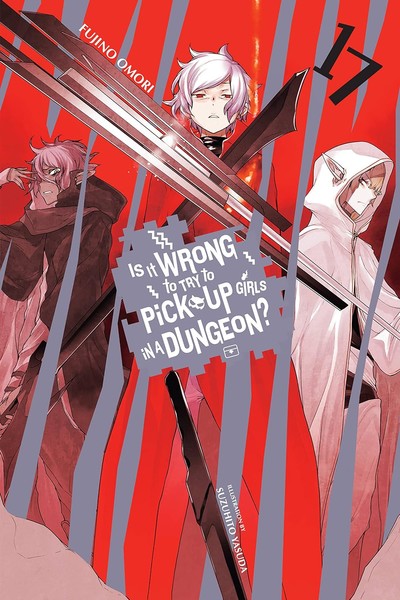
As far as I'm concerned, this is the little series that could. That feels like a silly way to put it, given that it's hardly "little" at this point, with anime adaptations, manga versions, and games to its name. Still, it's awe-inspiring when you consider the ridiculously inappropriate title and how the series' world has expanded (and continues to expand). Starting from a base of hero Bell coming to Orario to make a name for himself and pick up girls (per Granddad's instructions), it has morphed into a sprawling exploration of heroic themes in various mythologies, with author Fujino Ōmori clearly having done his research into a variety of pantheons. Bell's journey isn't his alone, and although there's the requisite number of women in love with him (even though he's fourteen), only two women's affections truly drive the story, and that's because they're goddesses with the actual power to do so. Bell's infatuation with Aiz Wallenstein drives things in a very different, but equally important way, which does a very nice job of showing the difference between a hero and a god. The main series has also spun off into supporting side series, with the Familia Chronicle episodes being the most important – you really want to have read Episode: Freya before volumes seventeen and eighteen of the main series because they inform each other directly. It's dense, intricate, and well-built, which means it's relatively easy to ignore some of Omori's writing quirks, such as too-descriptive battles and a weird fixation on "purity," which goes beyond the virgin goddess thing. While I love all of the ongoing series listed here, this is the stand-out, both for its exciting plots and for the fact that after all of these volumes, it's still good.
Disclosure: Kadokawa World Entertainment (KWE), a wholly owned subsidiary of Kadokawa Corporation, is the majority owner of Anime News Network, LLC. Yen Press, BookWalker Global, and J-Novel Club are subsidiaries of KWE.
discuss this in the forum (226 posts) |
back to The Best and Worst Anime of 2023
Feature homepage / archives